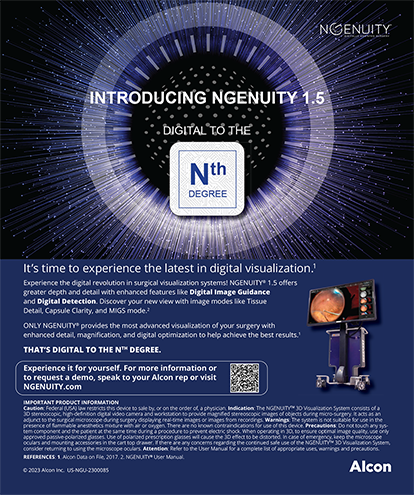The Medicare incentive bonus for health information technology has fostered a dramatic shift to electronic health records (EHRs) over the past few years but with a surprising twist: some health care professionals question if there is too much chart documentation. EHRs have complicated evaluation and management (E/M) code selection through the “note bloat” generated by easier record entries and bringing forward old data into current records. Faster and easier record entries occur because the features of most EHR programs include drop down menus that reduce typing, default values for some fields, and copy/paste functionality that duplicates prior entries. Auditors find that nearly every history is fully populated with assorted data, some old and some new. The US Department of Health and Human Services Office of Inspector General Work Plan for Fiscal Year 2013 raised a red flag concerning “an increased frequency of medical records with identical documentation across services. Medicare requires providers to select the code for the service on the basis of the content of the service and have documentation to support the level of service reported.”1
In EHRs, almost every eye examination contains observations about all of the elements, no matter how frequently the patient visits. This leads to “code creep,” which is inflation of the E/M level of service from low- and middle-tier codes to higher levels. Government regulators have observed this trend and sounded an alarm that EHRs are increasing the cost of health care, particularly in large hospital systems, without any apparent change in morbidity.2 Consequently, third-party payers and other regulators now place greater emphasis on medical decision making to justify the level of service within the E/M system.
E/M CODING
Choosing an appropriate E/M code is far more challenging than selecting an eye code, because there are numerous criteria, the rules are complex, the required chart documentation is extensive, and the selection process demands a high degree of clinical judgment. Experts frequently disagree on the correct code for a given case. According to the Centers for Medicare & Medicaid Services 2013 Part B Extract Summary System Data for Ophthalmology and Optometry, professionals in these fields select eye codes twice as often as E/M codes. Unfortunately, eye codes do not adequately describe all encounters. E/M coding guidelines are more formal and stringent than eye codes, and some visits require the use of the former.3
Ophthalmologists use the 1997 E/M guidelines4 because they provide specific instructions for eyes, whereas the 1995 guidelines do not and are intended for generalists instead of specialists. No revisions have been made to the E/M guidelines since 1997, and flaws exist. In particular, the code selection process counts elements within the history, examination, and medical decision making to determine the level of service without seriously addressing the use of the entries, especially when the patient's prior visit was very recent (ie, 1 day, or 1 week). EHRs have magnified such flaws.
MEDICAL DECISION MAKING TRUMPS ALL
Although the E/M Documentation Guidelines place history, examination, and medical decision making on a par with each other, Medicare's Claims Processing Manual instructions subordinate the history and examination to medical decision making. “Medical necessity of a service is the overarching criterion for payment in addition to the individual requirements of a [current procedural terminology] code. It would not be medically necessary or appropriate to bill a higher level of evaluation and management service when a lower level of service is warranted. The volume of documentation should not be the primary influence upon which a specific level of service is billed.”5
Palmetto GBA, the Part B Medicare administrative contractor for North Carolina, South Carolina, Virginia and West Virginia, offered this tip: “The guidelines do not state that Medical Decision Making (MDM) must be one of the key components documented; however, please keep in mind MDM will support/steer medical necessity. For example, a provider may document a comprehensive History and Examination; which would meet the requirements for [current procedural terminology] code 99215 (level five office visit); however, you must determine if it was medically necessary to document a comprehensive History/Examination (based on the presenting problem[s]). The MDM will (diagnoses/problems and management) help substantiate the level of service.”6
In 2010, Blue Cross and Blue Shield of Georgia established that medical decision making was to be one of the two components used to determine the E/M code level selected for required patient visits. The other component can be either patient history or physical examination.7
BEST PRACTICES
The best medical records are thorough and accurate. An accurate note represents the care provided for the presenting condition. Extraneous notes are of little or no value. Insufficiently trained technicians and scribes can create superfluous notes that lead to inefficiency. Not every patient encounter requires a comprehensive history and examination. Some caution is required when copying old information into a current record.
CONCLUSION
When selecting an E/M code, the gravity of the disease and treatment options are key components in determining the level of service. Clinicians must always consider medical decision making the critical factor for determining the level of service, as this will ensure correct E/M code selection even when the patient's history and examination are bloated within the EHR. More is not necessarily better when it comes to chart documentation. n
Kevin J. Corcoran, COE, CPC, CPMA, FNAO
• president and co-owner of Corcoran
Consulting Group, San Bernardino, California
• (800) 399-6565; kcorcoran@corcoranccg.com;
www.corcoranccg.com
1. Department of Health and Human Services Office of Inspector General. Fiscal Year 2013 HHS OIG Work Plan. http://oig.hhs.gov/reports-and-publications/archives/workplan/2013. Accessed January 19, 2015.
2. Department of Health and Human Services Office of Inspector General. Coding Trends of Medicare Evaluation and Management Services. Report OEI-04-10-00180. http://oig.hhs.gov/oei/reports/oei-04-10-00180.asp. Accessed January 19, 2015.
3. Johnson MP. Coding eye exams: clearing up the confusion. The Alert. Published summer 2008. http://www.corcoranccg.com/products/newsletter/alert-newsletter-topics-dates.
4. Centers for Medicare & Medicaid Services. 1997 Documentation Guidelines for Evaluation and Management Services. http://www.cms.gov/Outreach-and-Education/Medicare-Learning-Network-MLN/MLNEdWebGuide/Downloads/97Docguidelines.pdf. Accessed January 19, 2015.
5. Centers for Medicare & Medicaid Services. Medicare Claims Processing Manual. Selection of Level of Evaluation and Management Service. Use of CPT Codes (§30.6.1.A). http://www.cms.gov/Regulations-and-Guidance/Guidance/Manuals/Downloads/clm104c01.pdf. Accessed January 19, 2015.
6. Palmetto GBA. Railroad Medicare. E/M weekly tip: medical decision making. http://www.palmettogba.com/palmetto/providers.nsf/DocsCat/Providers~Railroad%20Medicare~EM%20Help%20Center~Weekly%20Tips~98SFEY3544. Accessed January 19, 2015.
7. Blue Cross and Blue Shield of Georgia. Documentation and Reporting Guidelines for Evaluation and Management Services Policy Effective March 1, 2010. http://www.bcbsga.com/provider/noapplication/communicationswlp/nosecondary/notertiary/pw_b142718.pdf?refer=chpproviderbcbsga. Accessed January 19, 2015.


